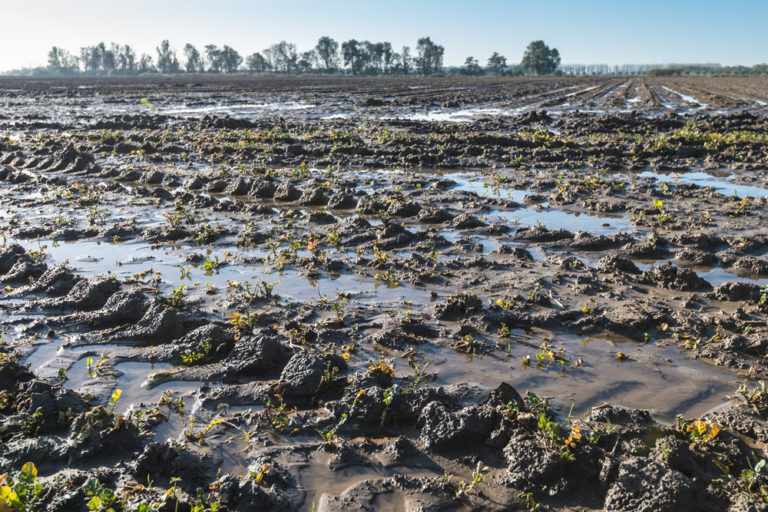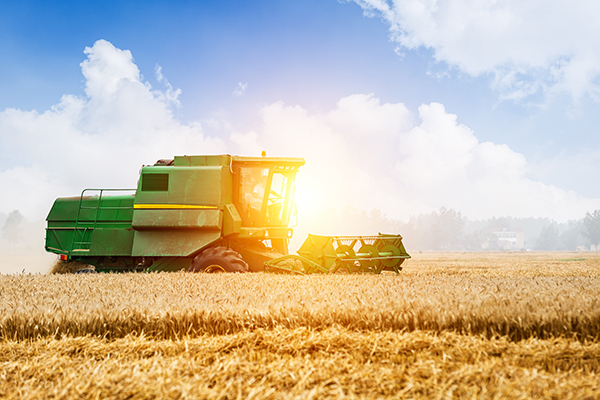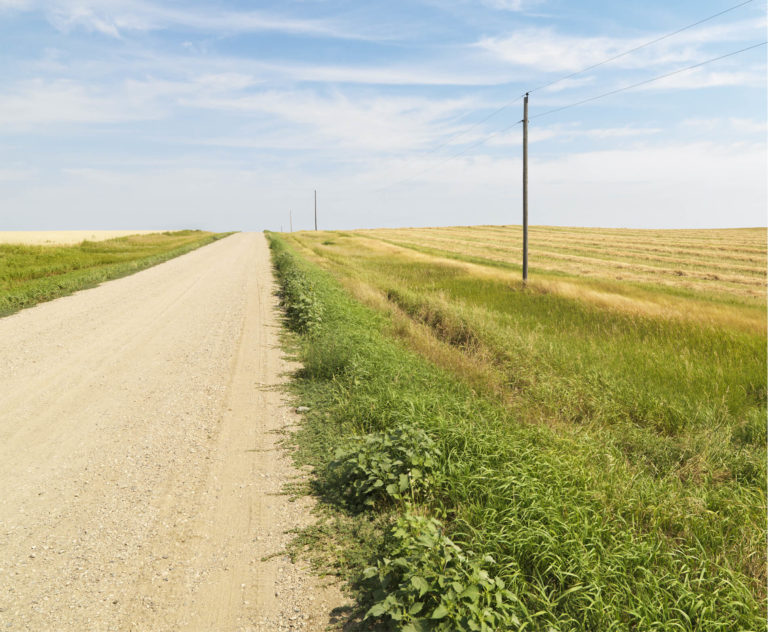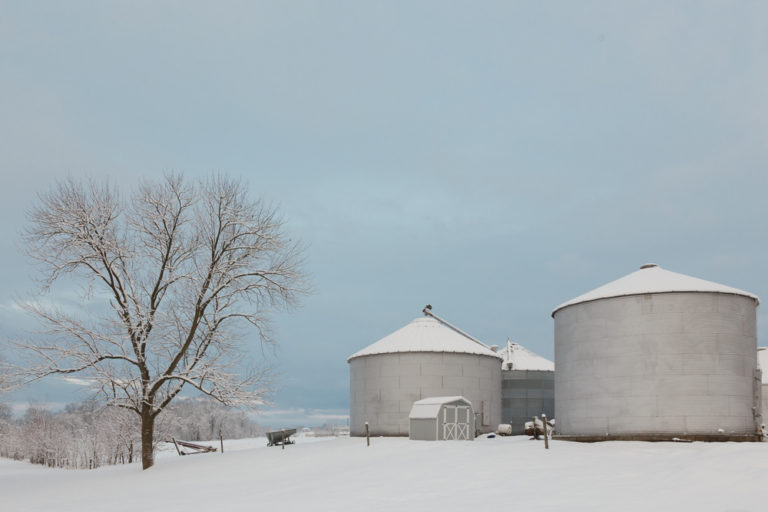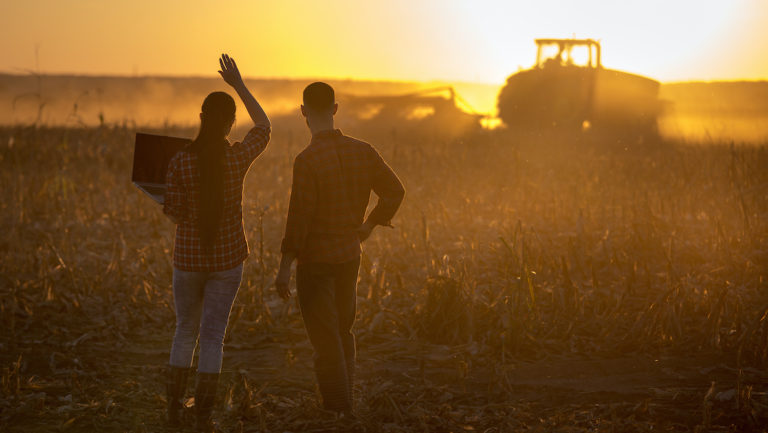
Farmers in North Dakota are a special breed. Their occupation is one that requires them to work long hours and face unpredictable weather conditions (which lead to unpredictable business conditions). There are many trials and tribulations involved with growing crops on the northern prairie. Naturally, many of them would love the opportunity to swap a late night spent working in the shop for a home-cooked meal around the family table, or maybe the seat of their tractor and a weak radio signal for a recliner and a television showing the big game, but it rarely works that way. On the other hand, there are many moments – too many to count, really – that these farmers treasure. Here are four aspects of agriculture in North Dakota that make it unique. Ask any farmer, and they will tell you that they wouldn’t trade them for anything.
1. Gravel Road Interactions
When you drive through the North Dakota countryside you’ll notice that nearly every farm you pass has a long, relatively narrow gravel road connecting it to the rest of the world. These roads may seem like nothing special to you, but that’s not the case for the farmers who use them every day. Farmers know that stretch of gravel like the back of their hand. In fact, they know every bump, divot, sweet spot and John Deere mailbox that they will come across during their early morning commute to the field.
It’s not the roads themselves that North Dakota farmers value the most, however. It’s actually the day-to-day interactions that take place on them. Whether it is the classic “finger wave” to a neighbor passing by, or a full-on, stopped-in-middle-of-the-road, windows-down conversation, farmers look forward to each bit of verbal and non-verbal communication.
The finger wave itself is universal acknowledgement to those brave enough to be driving in the proverbial middle of nowhere. The index finger raises off the pickup’s steering wheel to greet everyone, from school bus drivers to mail carriers.
“If somebody skips the wave, you know something is wrong,” laughs Julie Byron, an ag lender at First United Bank in Park River. “It’s sort of like passing somebody in the hall of an office building and saying good morning. I grew up in this area, and I’ve always appreciated that farmers share that connection with everyone.”
2. The North Dakota Horizon
Working from dawn to dusk is certainly not a rare occurrence in the life of a North Dakota farmer. Although these long hours can present their fair share of challenges, farmers will tell you that they also come with unique rewards. Dawn in North Dakota gives farmers a front row seat to some of the most breathtaking sunrises on planet Earth (after all, there is little to obstruct the view). But it doesn’t stop there. Farmers also get to witness picturesque views of that nearly endless horizon as the day goes on, culminating with the ultimate payoff at the end of the day. Whether it happens during their last pass in the field or on their drive home, sunset in rural North Dakota can be at once beautiful and blinding, a spectacular orange glow diffused through a haze of dust from the fields and the gravel roads. It’s a daily occurrence that farmers across the state wouldn’t trade for anything.
3. Lunch On The Tailgate
If you’ve never worked a long day in the field, you may not be aware of the meaning or significance of a tailgate lunch. These meals often come in a beat-up cooler, sometimes prepared by a family member and occasionally delivered in person half way through the day. No matter how that sandwich gets to the field, the pickup’s tailgate is the most logical place to eat, so unless it’s raining, that’s where the picnic often takes place. Lunch on a tailgate may not sound like a big deal, but to a farmer who has been in the field since 5:00 A.M., it’s worth its weight in gold.
Getting a chance to eat isn’t the only reason that farmers appreciate this time on the tailgate, though. It’s also an opportunity to spend a few minutes out of the day catching up with their family or friends, either in person or on the phone. If you happen to ask a North Dakota farmer about the subject, chances are they will tell you that a tailgate dinner is worth more to them than a New York Strip from a four-star restaurant.
4. Their Legacy
At the end of the day, farming isn’t just an occupation, it’s a way of life. For many North Dakota farmers, their operation is a legacy that spans generations – one they hope will carry on to the next. It’s this sense of pride that pushes them to work so hard. It’s the reason they wouldn’t consider swapping their way of life for any other occupation.
“Farming is important, but it’s also really hard work,” Byron says. “You have to love it, and I think that’s what makes it special. Here at First United Bank, we’ve spent more than a century supporting the legacy of North Dakota farming because we believe that every farmer deserves to succeed.”

